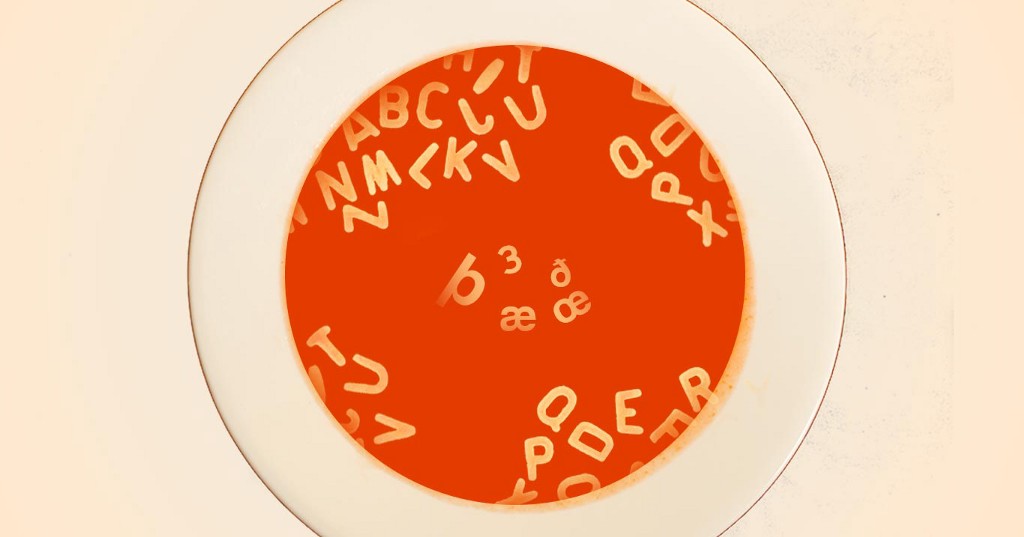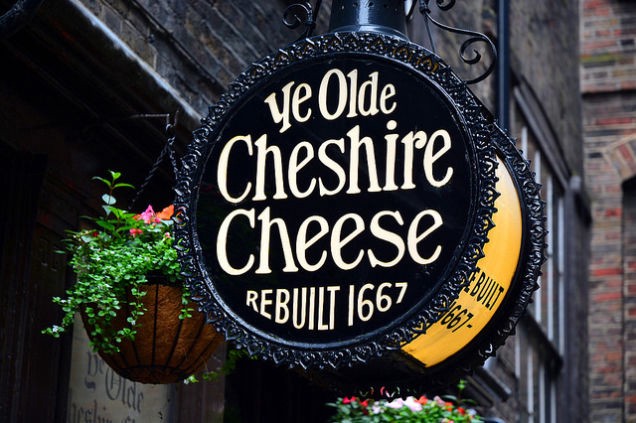We Used To Have 6 More Letters In Our Alphabet

? Where have all the letters gone? ?
Along quaint New England streets, you’ll probably spot a sign or two declaring itself “Ye Olde Tavern” or “Ye Old Soda Shoppe.” But before you adopt a British accent and order a pint of ale inside, there’s a bit of history you should know.

Phrases like ye olde are actually just some of the late 19th century’s first marketing ploys, meant to evoke a sentimental connection to older times. And ye has its own complicated story—based in the history of the alphabet.
English has always been a living language, changing and evolving with use. But before our modern alphabet was established, the language used many more characters we’ve since removed from our 26-letter lineup. The six that most recently got axed are:
Eth (ð)
The y in ye actually comes from the letter eth, which slowly merged with y over time. In its purest form, eth was pronounced like the th sound in words like this, that or the. Linguistically, ye is meant to sound the same as the but the incorrect spelling and rampant mispronunciation live on.
Thorn (þ)
Thorn is in many ways the counterpart to eth. Thorn is also pronounced with a th sound, but it has a voiceless pronunciation — your vocal cords don’t vibrate when pronouncing the sound — like in thing or thought.
Today, the same th letter combo is used for both þ and ð sounds. There is a pronunciation difference — thorn is a voiceless pronunciation and eth is voiced — but that’s just something you pick up as you learn to speak. Of course, you’ll never hear about this in school, because that’s English for you.
Wynn (ƿ)
Wynn was incorporated into our alphabet to represent today’s w sound. Previously, scribes used two u characters next to each other, but preferred one character instead and chose wynn from the runic alphabet. The double u representation became quite popular and eventually edged wynn out. Ouch.
Yogh (ȝ)
Yogh was historically used to denote throaty sounds like those in Bach or the Scottish loch. As English evolved, yogh was quickly abandoned in favor of the gh combo. Today, the sound is fairly rare. Most often, the gh substitute is completely silent, as in though or daughter.
Ash (æ)
Ash is still a functional letter in languages like Icelandic and Danish. In its original Latin, it denoted a certain type of long vowel sound, like the i in fine. In Old English, it represented a short vowel sound — somewhere between a and e, like in cat. In modern English, æ is occasionally used stylistically, like in archæology or medæval, but denotes the same sound as the letter e.
Ethel (œ)
Ethel also once represented a specific pronunciation somewhere between the two vowels o and e, though it was originally pronounced like the oi in coil. Like many clarifying distinctions, this letter also disappeared in favor of a simpler vowel lineup (a, e, i, o, u) with many different pronunciations.
